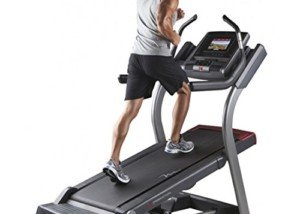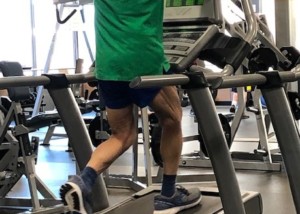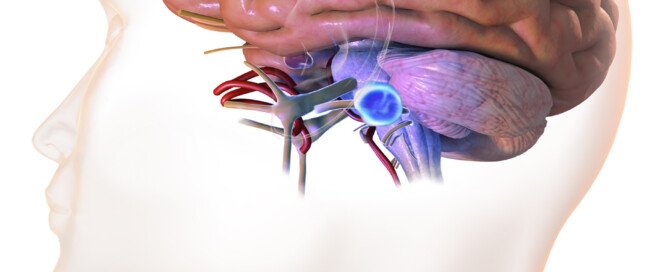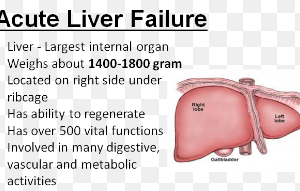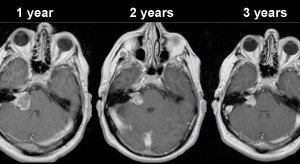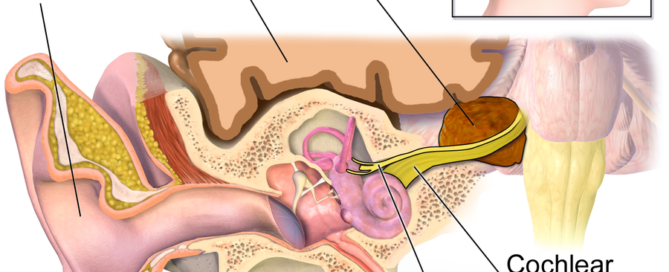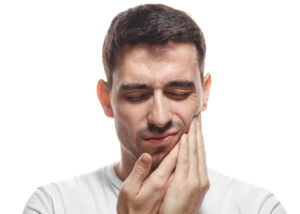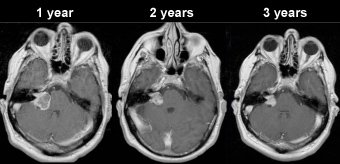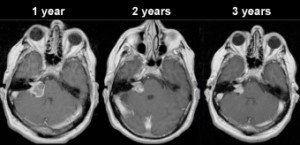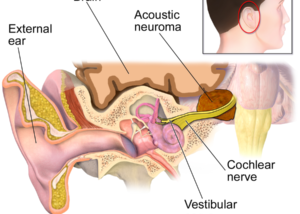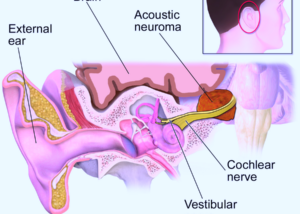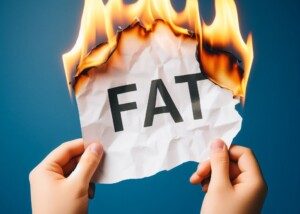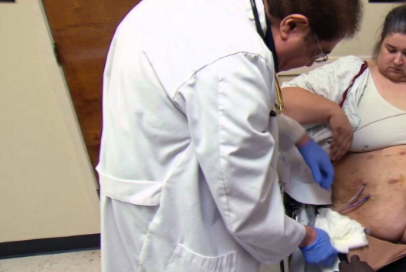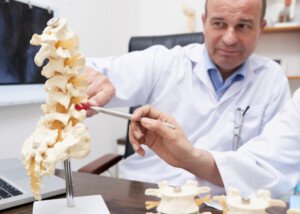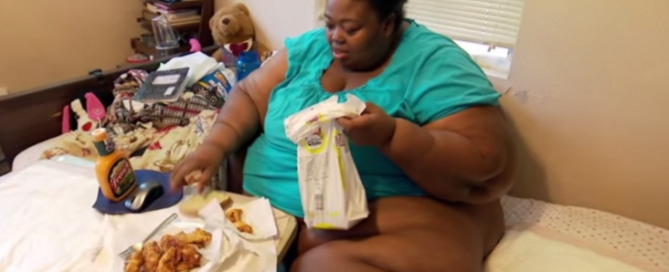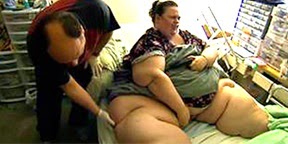15 Percent Treadmill Incline, 5 mph & Death Grip: Benefits ?
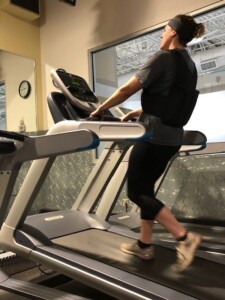
Are there any benefits or training effect if you death grip a treadmill while “walking” 5 mph at 15 percent incline?
First off, you’re setting your hips up for injury.
When I was a personal trainer at a major health club, my biggest pet peeve was the “grippers.”
I made it a point to inform two or three people every time I was there to remove their hands from the treadmill – and I gave them in-depth reasons why.
One day while walking on a treadmill to wind down from a strength workout, I was flabbergasted at the man on the machine next to mine.
• 15 percent incline
• 5.4 mph. Yes, 5.4 mph.
• Death grip, complete with hard yanking with each step.
• He wasn’t jogging; he was forcing himself to walk.
• His eyes were shut for most of this.
“This scenario creates poor body mechanics and disrupts the normal kinetic chain,” says Dr. Tom Carpenter, corrective exercise specialist, certified personal trainer and chiropractor, inventor of Stand Corrected™, a portable harness-like stretching tool that helps alleviate back, neck and shoulder pain.
“It displaces most of the load to the lower body, denying the mid-core muscles of engaging in order to assist in balancing the entire body during the gait mechanism,” explains Dr. Carpenter.
Because he was forcing a walk at over 5 mph while clutching the front bar of the treadmill and leaning way back, his hips were forcefully – and very unnaturally – over-rotating.
This unnatural, ballistic joint action puts him at risk for a repetitive stress injury in the hips.
But let’s suppose that never happens. He would still be setting his feet up for injury. Each step was slamming down on the belt in an unnatural way.
His entire motions from shoulders to feet were ridiculously unnatural and thus, there was no benefit to what he was doing.
Hanging hard to the treadmill, even at 15 percent and over 5 mph, will not produce a training effect that will carry over to real life.
In other words, if this is how he’s preparing for the hiking season, he’s in for a shocking surprise when he starts climbing hills – where there’s nothing to grip onto – and his low back starts killing him.

Holding on with straight arms makes the body tilt back AT THE SAME ANGLE AS THE INCLINE. Note the angular relationship of 90 degrees between the walker and the tread surface. This is the SAME angular relationship with a ZERO incline. The right figure is not holding on. This changes his body’s angular relationship to the tread surface, replicating the natural angle he’d be at if walking up a hill outdoors.
Incline Walking without Holding on Engages the Low Back Muscles
• The low back muscles (erector spinae) work to prevent you from falling backwards.
• This work is nullified if you hold on; your arms take over, freeing your low back from this important task.
• If your low back is used to being freed up from work in this fashion, then once you hit the hills outdoors—the real thing—your back will pay dearly for it.
Must all exercise be applicable to real life movement?
No. I myself do a few routines that have zero carryover to real life movement. For instance I do lateral crossover raises for deltoid work on a dual cable machine.
But this is for refinement of my “caps,” i.e., the sculpt of my deltoids.
Why do you think the man was on the treadmill at 15 percent incline and 5 mph?
• To isolate a muscle for sculpting
• To train for hiking
• To improve cardiovascular fitness
• To look ridiculous
I’ll bank on bullet 2 and/or 3. We already went over 2. But what about 3? Well certainly, his heart rate was elevated. In fact, he was sweating.
If you jar your body enough for 30 minutes, you’ll sweat, but some people sweat a lot more than others. The presence of sweat does not indicate efficacy of the exercise.
Furthermore, there is no need to put your hips and feet at risk for repetitive stress injuries in order to get a cardiovascular workout.
What to do if you want to exercise at 15 percent incline and 5 mph?
• Employ interval training rather than sustained (steady state) movement.
• Interval training would mean jacking the treadmill up to 5 mph for maybe 20, 30 or 45 seconds, at 15 percent incline, and jogging (no need to force a walk) this speed – WITHOUT HOLDING ON.
• After this brief burst (it may even be a minute or two full minutes, depending on your fitness), knock the speed down to a recovery-interval pace, perhaps 1 to 1.5 mph, while keeping the 15 percent incline.
• Or, you can also lower the incline if you want the recovery pace to be a little faster.
• After a few minutes of the recovery pace, return to the 15 percent, 5 mph setting.
• Do eight work intervals, without holding on, then warm down and you’re done!
• And all without imposing unnatural forces on your hip joints and feet.
• And all without looking absolutely absurd!
Think of how you’d do hill workouts outside. Would you hang onto anything? No.
There’s nothing to hold onto. So if you do incline workouts on a treadmill, why would you hold on?
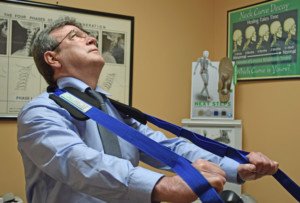
Photo credit: Aleesia Forni
Based upon 30+ years of experience, Dr. Carpenter’s practice approach reflects his belief that restoring optimum health and function will enable his patients to enjoy a much greater amount of vitality and wellness. Chiropractic care is true health care, not sick care!
 Lorra Garrick has been covering medical, fitness and cybersecurity topics for many years, having written thousands of articles for print magazines and websites, including as a ghostwriter. She’s also a former ACE-certified personal trainer.
Lorra Garrick has been covering medical, fitness and cybersecurity topics for many years, having written thousands of articles for print magazines and websites, including as a ghostwriter. She’s also a former ACE-certified personal trainer.
Acoustic Neuroma Endoscopic Surgery: Removed thru Ear Canal

Finally, endoscopic surgery for the removal of an acoustic neuroma has arrived, in which the tumor is removed through the ear canal using an endoscope. (more…)
Best Kind of Exercise for Sufferers of Congestive Heart Failure

Congestive heart failure does not mean you cannot or should not exercise.
In fact, it’s just what the doctor ordered.
You should know what the best kind of exercise there is for your condition.
One might say that the best kind of exercise for heart failure patients is whatever kind of exercise they “enjoy.”
But expecting exercise to be enjoyable may be quite unrealistic for many CHF patients.
Nevertheless, you certainly don’t want to attempt to adhere to a type of activity that you dread, either.
You Can Learn from Rats
Research done on rats, who share quite a few proteins and genes with humans, shows that a particular kind of exercise is beneficial for the chronic heart failure patient.
The study was conducted at the University of Colorado at Boulder and demonstrated that exercise of a low intensity may very well delay significantly the onset of congestive heart failure in people.
The rats that were used in this research were specifically bred to suffer from spontaneous high blood pressure and congestive heart failure.
The rats’ life expectancy was boosted 10-15 percent. The conclusion is that exercise of a low intensity nature will be beneficial to people with early congestive heart failure, assuming that the rat study is applicable to people.
The study report appears in the November 2005 American Journal of Physiology — Heart and Circulatory Physiology.
Since then, however, differing views of what the ideal exercise is for men and women with long-standing heart failure have popped up.
You’ll want to discuss exercise options with your cardiologist rather than just settling for only dietary and pharmaceutical management of your disease.
Nevertheless, the study points out that onset delay of congestive heart failure in these genetically manipulated rats, via “moderate” or low intensity exercise, was achieved in the absence of lowering the animals’ blood pressure.
This is important because the majority of humans with early congestive heart failure have high blood pressure.
Another interesting element of the research was that early on, several rats died after their treadmill speed was jumped from 10 meters/minute to 17.5 meters/minute.
The speed was taken down to 14 meters/minute for the remainder of the investigation, and there were no additional deaths.
Early Heart Failure
The paper points out that for those with early disease, low intensity (also referred to as “moderate” in this study) exercise could delay the need for costly drugs — but that eventually the drugs would be needed.
Starting an Exercise Program
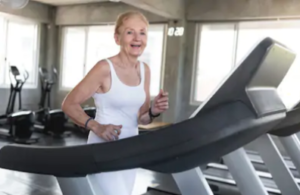
If you decide to use a treadmill, avoid the bad habit of continuously holding on. For momentary balance checks, DO hold on, but then once you’re re-steadied, swing your arms naturally. Otherwise you’ll be encouraging bad posture and inefficient walking. Credit: Shutterstock/This Is Me
Get going. Don’t make excuses. The housework you’ve been doing for years does not count.
Same with any activity you’ve been doing on the job or in the yard.
You need to add a variable — a new level of activity to your life.
You also need to accumulate more steps throughout your day — ANYTHING to be up and around on your feet more.
• March in place during TV commercial breaks.
• Buy a stationary bike and pedal while watching TV.
• Join a gym and take up strength training.
• Participate in low impact group fitness classes.
• Take up tai chi or yoga.
• Double the length of time you take to walk the dog.
• You may also want to seriously consider hiring a personal trainer.
 Lorra Garrick is a former personal trainer certified by the American Council on Exercise. At Bally Total Fitness she trained clients of all ages for fat loss, muscle building, fitness and improved health.
Lorra Garrick is a former personal trainer certified by the American Council on Exercise. At Bally Total Fitness she trained clients of all ages for fat loss, muscle building, fitness and improved health.
.
Top image: ©Lorra Garrick
Source: sciencedaily.com/releases/2005/12/051208231344.htm
Best Procedure for Preserving Hearing in Acoustic Neuroma

There are different kinds of surgeries for acoustic neuroma treatment, and overall, the prognosis for preserving hearing is poor.
You may be wondering what is the best of these procedures – “best” being a relative term.
Researchers from the University of Michigan Medical School wanted to find out.
The study involved 73 patients who received procedures for their acoustic neuromas between 1999 and 2005.
This large time frame for so few patients exemplifies the rarity of the benign tumor.
The procedure studied is called MCF: middle cranial fossa—an approach from above the ear.
Three-fourths of patients who had useful hearing prior to this surgical procedure had a useful hearing level post-surgery.
The caveat is that, according to H. Alexander Arts, MD, the acoustic neuroma needs to be “small” to “have a good chance of preserving your hearing,” says the report in Otology & Neurotology (2006)
Another surgical procedure, as well, has the potential to preserve hearing: the suboccipital approach (from behind the ear).
But the researchers conclude that the MCF approach is better as far as less chance of injuring the hearing nerve.
Hearing Preservation Rates after Acoustic Neuroma Surgery Are Improving

• This study points out that when non-MCF procedures are used, there’s a 30 percent rate of preserved hearing.
• The middle cranial fossa approach is being used more often.
• MRI technology is catching more acoustic neuromas when they are small.
One of the study’s limitations, however, is it’s very small size: 73 suhjects.
Learning that you have a brain tumor is unsettling enough without having to stress over what surgical technique should be used, if you’ve been told that the mass needs to be removed.
“The success rates for preserving hearing and acoustic neuroma surgery really depends on the expertise of the surgical team rather than the particular approach,” says Ted McRackan, MD, MSCR, Director, Skull Base Center; Assistant Professor, Department of Otolaryngology – Head and Neck Surgery, Medical University of South Carolina.
“There are data suggesting that the middle fossa approach has better preservation rates than the retrosigmoid approach, but whichever approach the surgeon is most comfortable with likely gives you the best chances of success.”
Acoustic neuromas are very rare. The most common symptoms are sudden tinnitus in one ear only, along with sudden hearing loss in that ear.
However, this symptom duo in only one ear almost always has a far more benign cause.
 In addition to acoustic neuroma, Dr. McRackan’s clinical practice focuses on comprehensive management of ear, hearing, balance and skull base disorders. Areas of interest include cochlear implants, facial nerve disorders and tumors, vertigo and endoscopic ear surgery.
In addition to acoustic neuroma, Dr. McRackan’s clinical practice focuses on comprehensive management of ear, hearing, balance and skull base disorders. Areas of interest include cochlear implants, facial nerve disorders and tumors, vertigo and endoscopic ear surgery.
 Lorra Garrick has been covering medical, fitness and cybersecurity topics for many years, having written thousands of articles for print magazines and websites, including as a ghostwriter. She’s also a former ACE-certified personal trainer.
Lorra Garrick has been covering medical, fitness and cybersecurity topics for many years, having written thousands of articles for print magazines and websites, including as a ghostwriter. She’s also a former ACE-certified personal trainer.
.
Top image: ©Lorra Garrick
Source: sciencedaily.com/releases/2006/03/060306114450.htm
Is There a Drug that Can Stop Acoustic Neuroma Growth ?

The possibility that a common over the counter drug can stop or slow down the growth of an acoustic neuroma is very promising.
If you’ve been diagnosed with an acoustic neuroma, and your doctor has recommended “watchful waiting” rather than surgery or radiation, there’s a drug you should ask him about.
It is aspirin.
“There is some preliminary evidence showing that aspirin usage is associated with a decreased growth rate for acoustic neuromas,” says Ted McRackan, MD, MSCR, Director, Skull Base Center; Assistant Professor, Department of Otolaryngology – Head and Neck Surgery, Medical University of South Carolina.
“However, the evidence is far from concrete and additional studies are being done to further evaluate this question.”
These studies on the same course as the one that’s reported from 2014 in Otology & Neurotology.
This study says that for the first time, use of aspirin has been found to correlate with halted growth of this very rare auditory tumor.
The research comes from Massachusetts Eye and Ear, Harvard Medical School, Massachusetts Institute of Technology and Massachusetts General Hospital.
Common Drug Seems to Slow Growth of Acoustic Neuroma
• Over 600 people with acoustic neuroma were analyzed for the study.
• There currently is no drug that is marketed as a deactivator to this tumor’s growth.
• But aspirin was shown to be promising in this study.
• The subjects, who took aspirin, were followed with multiple MRIs.
• A correlation was found between the subjects who took aspirin and the rate of growth.
The study shows that there is a “potential therapeutic role” of this drug in slowing down the growth of an acoustic neuroma, says Konstantina Stankovic, MD, in the report, leader of the study and an otologic surgeon.
The study did not look into whether or not a daily aspirin can actually prevent the initial development of an acoustic neuroma.
Daily aspirin use comes with the risk of internal bleeding.
Do not proceed with daily intake of aspirin without first consulting with your medical team.
That all said, this study is very good news for those who have been diagnosed with an acoustic neuroma, as the “headache drug” is very well-tolerated by most people.
A Subsequent Study
A study published in 2019 shows that aspirin had no effect on an acoustic neuroma’s growth.
It’s advised that patients keep current on the latest studies.
An acoustic neuroma is benign (cannot spread).
 In addition to acoustic neuroma, Dr. McRackan’s clinical practice focuses on comprehensive management of ear, hearing, balance and skull base disorders. Areas of interest include cochlear implants, facial nerve disorders and tumors, vertigo and endoscopic ear surgery.
In addition to acoustic neuroma, Dr. McRackan’s clinical practice focuses on comprehensive management of ear, hearing, balance and skull base disorders. Areas of interest include cochlear implants, facial nerve disorders and tumors, vertigo and endoscopic ear surgery.
 Lorra Garrick has been covering medical, fitness and cybersecurity topics for many years, having written thousands of articles for print magazines and websites, including as a ghostwriter. She’s also a former ACE-certified personal trainer.
Lorra Garrick has been covering medical, fitness and cybersecurity topics for many years, having written thousands of articles for print magazines and websites, including as a ghostwriter. She’s also a former ACE-certified personal trainer.
.
Top image: Blausen.com staff
Source: sciencedaily.com/releases/2014/01/140124110705.htm
High Dose vs. Low Dose Radiation for Acoustic Neuroma Treatment
Higher radiation doses for acoustic neuroma can actually damage hearing, but are lower doses enough to destroy this tumor or at least stop it from growing more?
When radiation is used, the vast majority of these benign tumors do not grow back, points out Maria Werner-Wasik, MD., an associate professor of radiation oncology at Jefferson Medical College of Thomas Jefferson University, in a report.
Could lower doses of radiation treat acoustic neuroma as effectively as higher?
• The researchers compared two groups: 74 patients who received small but daily doses of radiation, and 41 patients who also received daily small doses—but smaller than in the first group.
• Local tumor control for both groups was the same.
• Toxicity to the fifth and seventh cranial nerves was the same in both groups.
• However, hearing preservation in the smaller-dose group was better.
“We think the lower dose level is associated with equally good local control and better hearing preservation,” says Dr. Werner-Wasik in the report.
Two additional benefits of the smaller doses of radiation are those of fewer visits and shorter treatment times.
Dr. Werner-Wasik also adds that similar results were found by other researchers.
Gamma Knife (targeted radiation) treatment is becoming more common for patients with acoustic neuroma, for which surgical resection causes permanent hearing loss for most patients.
Dr. Werner-Wasik aims to continue the research using even smaller doses of radiation for treating acoustic neuroma, which is a benign tumor.
It’s estimated that between 2,000 and 3,000 Americans are diagnosed every year with it.
What Kind of Doctor to See After Acoustic Neuroma Removal
“In modern acoustic neuroma surgery, the surgical team consists of a neurotologist and a neurosurgeon,” says Ted McRackan, MD, MSCR, Director, Skull Base Center; Assistant Professor, Department of Otolaryngology – Head and Neck Surgery, Medical University of South Carolina.
“Depending on the practice setup, you may follow up with one or both of these physicians after surgery.”
 In addition to acoustic neuroma, Dr. McRackan’s clinical practice focuses on comprehensive management of ear, hearing, balance and skull base disorders. Areas of interest include cochlear implants, facial nerve disorders and tumors, vertigo and endoscopic ear surgery.
In addition to acoustic neuroma, Dr. McRackan’s clinical practice focuses on comprehensive management of ear, hearing, balance and skull base disorders. Areas of interest include cochlear implants, facial nerve disorders and tumors, vertigo and endoscopic ear surgery.
 Lorra Garrick has been covering medical, fitness and cybersecurity topics for many years, having written thousands of articles for print magazines and websites, including as a ghostwriter. She’s also a former ACE-certified personal trainer.
Lorra Garrick has been covering medical, fitness and cybersecurity topics for many years, having written thousands of articles for print magazines and websites, including as a ghostwriter. She’s also a former ACE-certified personal trainer.
Source: sciencedaily.com/releases/2006/11/061108154942.htm
Acoustic Neuroma: Gamma Knife (Radiation) or Regular Surgery?
In plain English which is better for acoustic neuroma treatment: radiosurgery (pinpointed radiation on the tumor) or “under the knife” surgery in which the tumor is cut out?
If you’ve been diagnosed with an acoustic neuroma, you may already know that there are three main treatment options (besides surveillance):
• Radiosurgery (“cyber knife,” “Gamma Knife” or targeted radiation)
• Regular surgery (microsurgery)
• Transcanal surgery (not as common)
Karpinos et al made a comparison between radiosurgery and regular surgery for acoustic neuroma in 96 patients.
Gamma Knife vs. Surgery to Treat Acoustic Neuroma
• Between 1993 and 2000 the subjects were treated at Memorial Hermann Hospital, Houston.
• Subjects who had regular surgery had larger tumors and were younger when compared to the Gamma Knife group.
• Tumors were divided into small, medium and large.
Tumor Growth Control After Treatment
• 100 percent for regular surgery
• 91 percent for Gamma Knife
Measurable Hearing Preservation
• 57.5 percent for Gamma Knife
• 14.4 percent for regular surgery
Facial Neuropathy (problem with facial nerve)
• Development of facial neuropathy in the surgery group was “significantly higher” than in the radiosurgery patients.
Trigeminal Neuropathy (problem with cranial nerve)
• You guessed it: The surgery group had a “significantly higher” rate of neuropathy.
Miscellaneous
• Microsurgery patients had a longer hospital stay.
• Microsurgery patients had more perioperative complications (this means during and post-operative phases taken together).
The full report is in International Journal of Radiation Oncology (12/2002).
Conclusion
“The decision of whether to observe versus operate versus perform radiosurgery (Gamma knife) is complex and dependent on the patient’s age, symptoms (balance issues and hearing), tumor size and characteristics, and patient’s values,” says Ted McRackan, MD, MSCR, Director, Skull Base Center; Assistant Professor, Department of Otolaryngology – Head and Neck Surgery, Medical University of South Carolina.
“The patient should discuss all options with his or her treating physician.” There is no one-size-fits-all template.
Acoustic Neuroma Risk Factors
One primary risk factor for this benign tumor of the inner ear is genetic predisposition.
Individuals with a rare genetic disorder called neurofibromatosis type 2 (NF2) are at a significantly higher risk for developing acoustic neuromas.
NF2 is an inherited condition characterized by the growth of noncancerous tumors on nerves, including those associated with hearing and balance.
Another potential risk is exposure to environmental factors, though this connection is less well-established.
Some studies suggest that prolonged exposure to certain environmental toxins or radiation may play a role in the development of acoustic neuromas, but more research is needed to confirm these links.
Age and gender also influence risk. Acoustic neuromas are most commonly diagnosed in people between 30 and 60, and they tend to occur slightly more frequently in women than in men.
However, the reasons for these demographic patterns are not yet fully understood.
 In addition to acoustic neuroma, Dr. McRackan’s clinical practice focuses on comprehensive management of ear, hearing, balance and skull base disorders. Areas of interest include cochlear implants, facial nerve disorders and tumors, vertigo and endoscopic ear surgery.
In addition to acoustic neuroma, Dr. McRackan’s clinical practice focuses on comprehensive management of ear, hearing, balance and skull base disorders. Areas of interest include cochlear implants, facial nerve disorders and tumors, vertigo and endoscopic ear surgery.
 Lorra Garrick has been covering medical, fitness and cybersecurity topics for many years, having written thousands of articles for print magazines and websites, including as a ghostwriter. She’s also a former ACE-certified personal trainer.
Lorra Garrick has been covering medical, fitness and cybersecurity topics for many years, having written thousands of articles for print magazines and websites, including as a ghostwriter. She’s also a former ACE-certified personal trainer.
.
Top image: ©Lorra Garrick
Source: redjournal.org/article/S0360-3016(02)03651-9/abstract
How Heavy Should a Woman Lift Weights for Workouts ?

Women who are new to strength training — lifting weights — may wonder just how much they should lift for their gym workouts.
The rule of thumb for women is the same as for men, if you’re thinking in terms of safety. (more…)
Why Is Dr. Nowzaradan of 600 Pound Life Always Hunched Over?
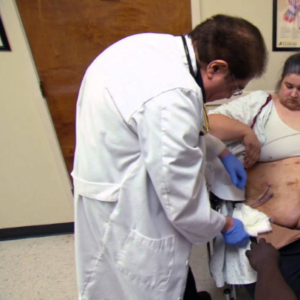
Ever notice that “Dr. Now” on “My 600 Pound Life” has a hunchback?
Are thousands of hours hunched over during surgery the cause of Dr. Nowzaradan’s hunched back?
Or is Dr. Now’s perpetual hunching over just bad posture?
• It’s not bad posture.
• It’s not caused by thousands of hours performing surgery.
• If it were caused by all the surgery he’s performed, why aren’t most other surgeons — especially those over 60, afflicted with this condition?
The condition that makes Dr. Younan Nowzaradan “hunch over” is called kyphosis.
I sent the photo of Dr. Now in this post to Justin J. Park, MD, a board certified orthopedic spine surgeon with The Maryland Spine Center at Mercy Medical Center in Baltimore, MD.
Dr. Park explains, “Although ‘hunching over’ or development of kyphosis is a natural part of aging for both men and women, I think that the man in the photo has a more severe form of kyphosis that is not part of natural aging.
“He may have a condition called Scheuermann’s kyphosis. It often develops in adolescence and can be a cause of back pain.”
Kyphosis is an abnormal curvature of the upper spine and has nothing to do with bad posture.
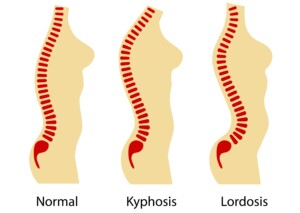
Shutterstock/Nemanja Cosovic
“Kyphosis is a result of disc degeneration and vertebral body collapse that leads to the deformity,” says Dr. Park.
“Because it is a structural condition, people can’t ‘just straighten out’ from it.”
When they lean over or bend over, the curvature, or the so-called kyphotic curve, becomes more pronounced.
In Dr. Now’s case, we don’t know for sure what the cause is, but he clearly has kyphosis.
Scheuermann’s disease is a malformation of the spine that begins after puberty.
The treatment for Scheuermann’s is a special back brace applied to the young patient who’s still growing; this may arrest progression of the rounding of the upper back.
However, Dr. Park says, “Unfortunately, bracing for kyphosis oftentimes is not effective in preventing further deformity.”
 Dr. Park’s advanced surgical techniques allow him to perform precise and delicate surgeries. He offers the latest in degenerative spinal fusion, minimally invasive surgery, spinal trauma and complex spinal deformity correction.
Dr. Park’s advanced surgical techniques allow him to perform precise and delicate surgeries. He offers the latest in degenerative spinal fusion, minimally invasive surgery, spinal trauma and complex spinal deformity correction.
 Lorra Garrick has been covering medical, fitness and cybersecurity topics for many years, having written thousands of articles for print magazines and websites, including as a ghostwriter. She’s also a former ACE-certified personal trainer.
Lorra Garrick has been covering medical, fitness and cybersecurity topics for many years, having written thousands of articles for print magazines and websites, including as a ghostwriter. She’s also a former ACE-certified personal trainer.
“My 600 Pound Life: The Enablers’ Story”
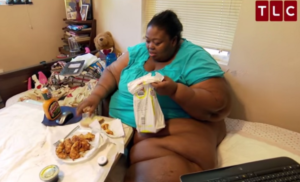
More attention must be given to the disenchanted souls on “My 600 Pound Life”: the enablers!
One of the recurring themes among the people who enable (bring huge amounts of food to) a person with super morbid obesity is, “I love her; how can I say ‘No’?”
Viewers are incessantly stunned by these types of comments straight from the mouths of the enablers — who may be the spouse, significant other, parent, child or even sibling of the super morbidly obese man or woman who’s bed- or chair-ridden due to their size.
There are many things in life that are incredibly difficult to do. Saying “No” to your 600 pound family member should not be one of them — when it’s literally a matter of their life or death.
TLC’s “My 600 Pound Life” follows the stories of people in their 20s to 50s who weigh at least 600, but sometimes over 750 pounds.
Many enablers are spouses or significant others.
I’ve watched every episode of “600 Pound Life” thus far. A common scenario is that a man marries a woman who weighs around 400 pounds — but over time, she gains even more weight.
Less common is a woman who marries a man of this weight, then post-marriage he gains and she enables, and it’s a vicious cycle.
The eating-disordered spouse (or significant other) continues gaining weight until she or he is rendered either virtually non-functional or semi-functional.
The able-bodied spouse continues to bring the 600 pounder food in gigantic quantities.
How much blame should we place on the enablers in “My 600 Pound Life”?

Dr. Younan Nowzaradan, the bariatric surgeon featured on “My 600 Pound Life,” has passionately called out enablers on quite a few episodes.
He clearly places some of the blame on the enabler. This is obvious when he first meets the patient and the enabler with him or her.
One enabler, the mother of the subject, even explained that there was no point in saying “No” because her daughter was capable of obtaining the food anyways.
Don’t these enablers realize that saying “No” can mean the difference between 600 and 500 pounds?
Perhaps over time, refusing to play the role of enabler would help the subject lose some weight — and “some” is better than continuing to gain.
Weighing 500 pounds is dangerous, but not as dangerous as 600 pounds.
Is It an Issue of Will Power with the Enablers?
It’s a defeatist approach, bringing the food because “She’ll get it anyways.”
She—or he—if severely compromised by all the body weight, will NOT always get the same amount of food “anyways.”
It would be too painful to “anyways” get the same amount of food.
• It takes all of their might just to get into a car.
• It takes all their energy just to walk from bedroom to kitchen.
• It’s logical to conclude that without the enabler feeding them, these subjects would actually consume FEWER calories.
If the enabler stopped enabling, a severely incapacitated overeater would be forced to, for example, consume 15,000 calories a day rather than 20,000.
Several thousand calories less per day would result in weight loss — and again, 500 pounds is not as bad as 600 pounds.
- So 3,500 calories = one pound of fat.
- If someone normally eats 20,000 calories a day, then drops to 15,000 because the enabler is no longer bringing them food, the weight loss will be rapid…AT FIRST.
But they won’t keep losing 42 pounds indefinitely at 15,000 calories per day.
There will very soon be a plateau, because 15,000 a day is enough food for seven adults.
But as mentioned, SOME weight loss is always better than staying at the same gargantuan weight, let alone continuing to gain fat.
But won’t the weight loss make the subject more mobile and hence, more able to get up and cook big meals?
Most likely this is exactly what would happen, and they would be right back up there at 20,000 calories/day — and start gaining.
However … this likely outcome should never be used as an excuse for enabling the individual!
Furthermore, dropping 50 pounds JUST MIGHT spark motivation in the subject to continue trying to lose weight.
The enablers on “My 600 Pound Life” will never be able to come up with a logical, rational, understandable excuse for their behavior — at least none that Dr. Nowzaradan accepts.

